GARDEN
11 Best Shade-loving Herbs

For optimum growth, all plants need to get enough basic elements, including sunlight. In fact, there are also plants that grow well in the shade. You can take advantage of the shady areas in the garden to plant, at the same time, those spaces are not bare but will be greener. Check out the 11 Best Shade-loving Herbs and start growing some of them in your garden with limited sunlight.
1. Lemon balm

Lemon balm is an aromatic herb that spreads a lemony scent. This herb is good for both medicinal and culinary uses. It needs rich and moist soil. It prefers to grow in sun and warmth, it also does well in partial shade.
You can grow it as a perennial if you live in zones 9-10. Frequent pruning prevents early flowering and keeps your plants bushy.
2. Parsley

Native to the Mediterranean, this popular herb is often grown as an annual. It thrives in zones 5-9 and prefers a temperature range of 70 to 85.
Not only the leaves but also the roots can be used as a vegetable. Also, a poultice of the leaves is great to treat insect bites and bruises for pain relief.
This herb requires moist soil rich in organic matter for its happy growth. It loves growing in light shade for the lush growth of the leaves, but it also grows well in full sun.
There are two varieties available including the flat-leaved Italian parsley (Petroselinum neapolitanum) and its curly-leaved cousin (Petroselinum crispum) you can choose to grow.
3. Ginger
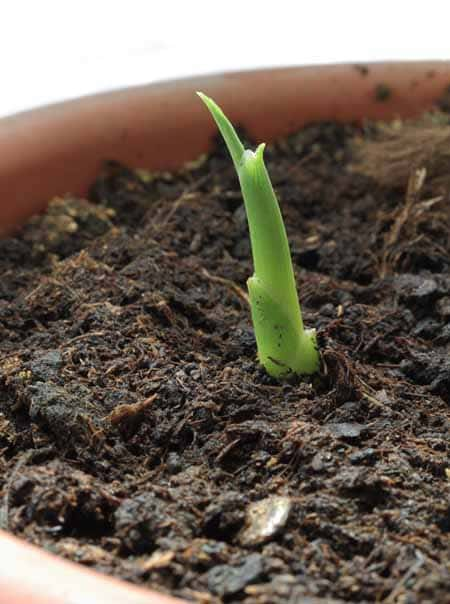
Ginger is grown as a perennial in zones 9-12. It can be propagated by the division of the rhizomes. A good time to grow this herb is in early spring, after a few weeks, the young leaves will be sprouted from buds or ‘eyes’ to every section. Make sure that mulch it well to keep in moisture and provide warmth.
When the fall comes, you can harvest the rhizomes which can be dug up and stored in a cool place to be used as a fresh herb or dried to make ginger root powder.
Ginger gives roots used as a spice in the kitchen and as a folk medicine to treat nausea and digestive problems.
4. Cilantro
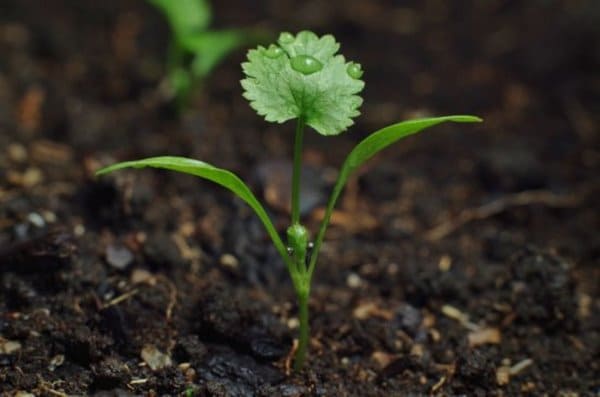
Cilantro is commonly called Chinese parsley, it grows well in zones 4-10. The young and tender leaves give an intense flavor, fresh, slightly citrusy flavor, making it a great addition to many recipes.
This herb is really, really easy to grow from seeds, and thrives in rich, moist soil containing plenty of humus. It also grows well in full sun where ample soil moisture but it results in bitter leaves. When grown in partial shade, this ensures maintaining its taste and flavor, at the same time, helps a steady crop of larger leaves.
5. Thyme
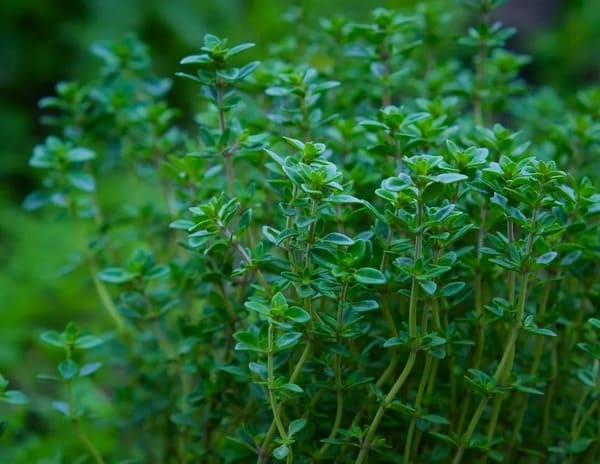
Thyme is one of the easiest herbs, it grows well almost anywhere and can be planted as a perennial in zone 9. It does well both in drought and light freezes but requires some protection on cold winter days. It prefers to grow in shade and also grows happily in sunny spots.
Thyme has a highly branching and spreading hab and bears tiny leaves and pink or purple flowers. The spicy flavor of thyme is loved using in many meat dishes. To keep your plants healthy and green, frequent pruning.
6. Wild ginger
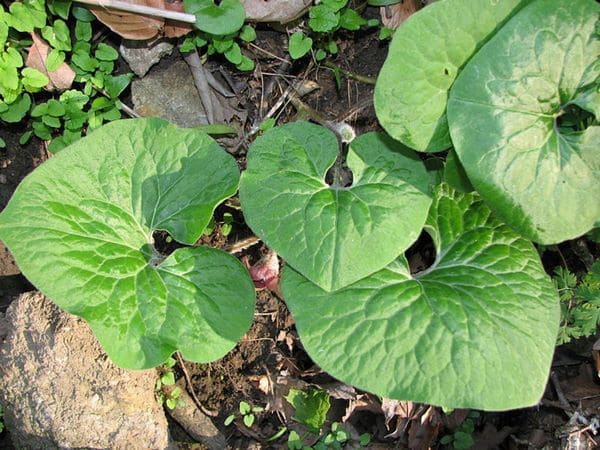
Wild ginger is also known as a herbaceous herb and is commonly used as a groundcover. It grows anywhere in zones 2-8. It thrives in the shade of tall and grows wells in moist, slightly acidic soil.
It bears beautiful, heart-shaped leaves that spread and cover the area to give a stunning look while the rhizomes spreading underground can be used in cooking to impart a spicy flavor to recipes. According to Native American Indians, wild ginger is used to treat colds and fevers.
7. Chives
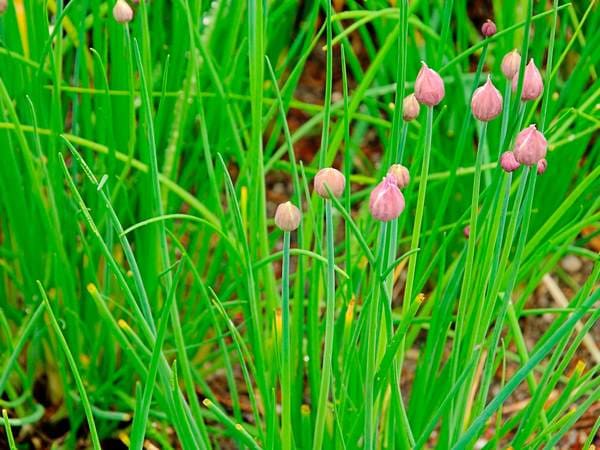
Chives is a perennial, clump-forming herb that belongs to the onion family. In cooking, its leaves are used rather than the underground bulbs. The thin and grass-like leaves bring a great flavor and taste to many recipes such as soups, potato, and egg dishes. Also, the pink edible flowers are perfect for garnishing.
You can start growing it from seeds or by divisions of the clumps. Besides, give it rich, well-drained, and moist soil, waterlogging should be avoided. It prefers to grow in a sunny location but gets a light shade in the afternoon.
Chives bring health benefits by aiding digestion and relieving gas. Growing it in the garden is a natural pest-repellent without using chemicals.
8. Shiso/Red perilla
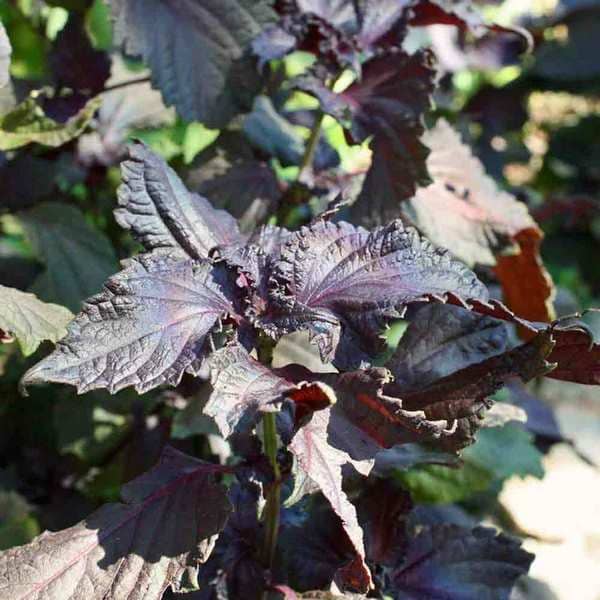
Shiso/Red perilla is a part of the mint family and is commonly called Beefsteak plant or Red Chinese basil. It grows well in zones 3-11 as an annual and loves moist, rich soil with some shade. You can grow this herb easily from seeds.
It provides colorful leaves with an anise-like flavor used as a flavoring and coloring agent in vegetable dishes, rice, and pickles.
9. Angelica
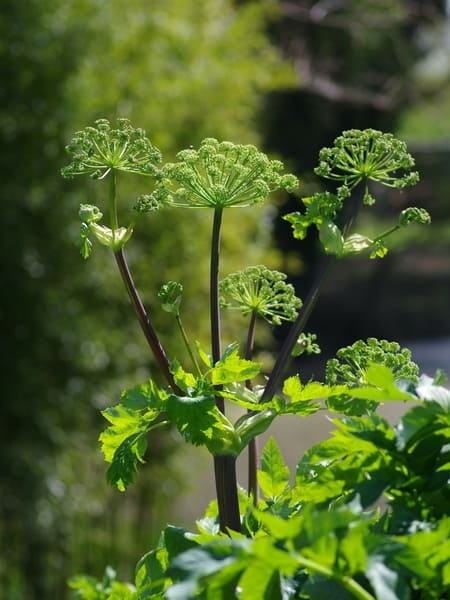
Angelica is a tall herb that can be grown in USDA zones 4-9 and has a celery-like flavor. This herb is used to be a popular cake decoration and also has medicinal value to relieve digestive problems and cough. So, you can grow it in the garden to use its leaves and stem.
It prefers woodland conditions, needing ample shade and soil moisture to grow optimally. Angelica can be planted in the shade of big trees where it can enjoy the dappled shade and the slightly acidic soil.
10. Mint
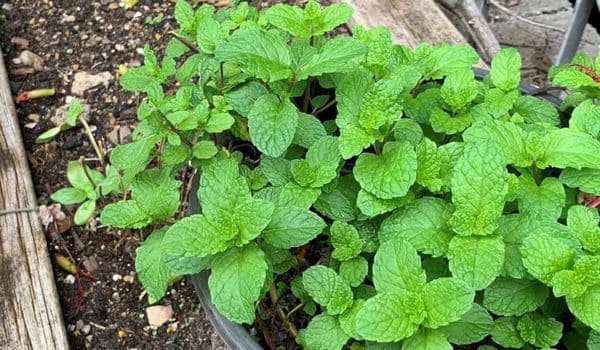
This common herb grows well both in gardens and containers. It is easy to grow from seeds or cuttings. It thrives well in well-drained, moist soil and prefers light shade in warm areas.
It tends to grow leggy with its bright green, quilted leaves. Its fresh aroma and flavor are a delight to have in the garden and in the kitchen. Just grow once, it will give you plenty of leaves to make digestive teas and pretty garnishes for many dishes.
11. Tarragon
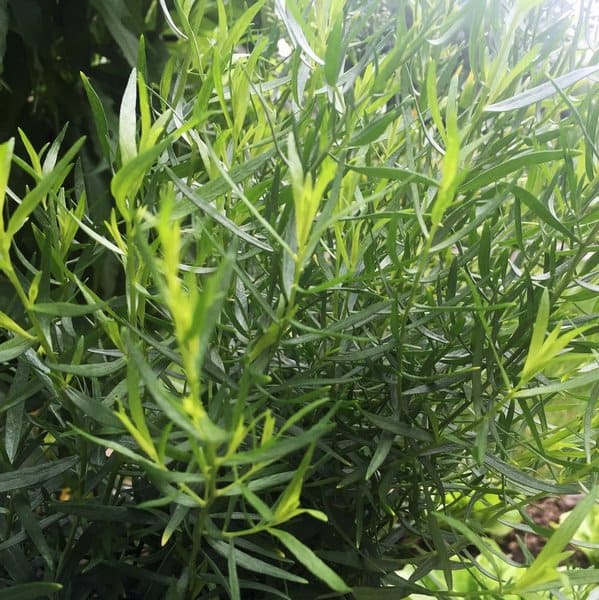
Tarragon is a slender plant that produces long, narrow leaves with an anise-like flavor. This herb grows easily from stem cuttings or root divisions. Although it prefers rich, well-draining, growing in soil poor soil intensifies its flavor.
It doesn’t require much water because the rhizomatous roots can rot in wet and waterlogged conditions. For the best, you should water the plants not more than once or twice a week.
The herb does well in locations where it gets full morning sun but afternoon shade. It thrives in warm areas, but cannot withstand very high temperatures.
GARDEN
15 Houseplants That Grow Well in Vases with Water
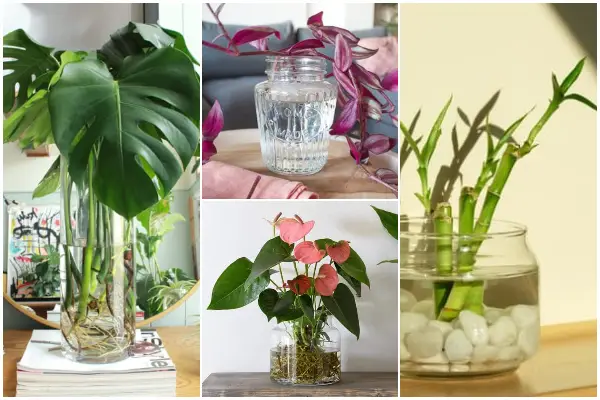
Vases are a fun way to display the beauty of flowers or propagate plants from cuttings. No need for the soil, simply immerse the nodes or the end of the stems in the water, add some decorative gravel, and you are done! They are so easy to make that everyone can create them at home, and especially your hand is always clean.
Instead of decorating flowers, check out the 15 Houseplants That Grow Well in Vases to make the living space more impressive in your own way.
1. Pothos
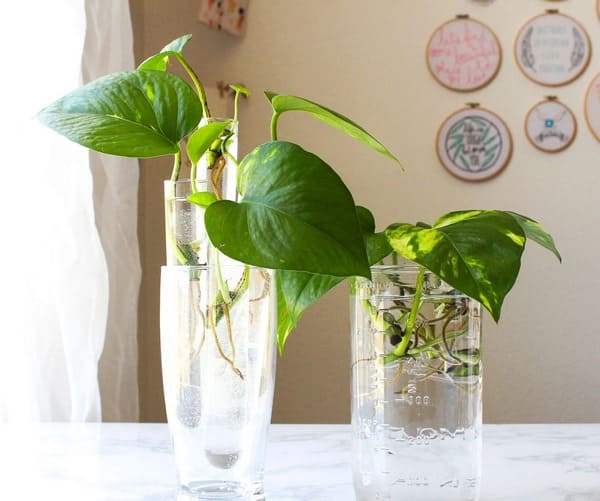 Image source: instructables
Image source: instructables
This Pothos displays heart-shaped green and white leaves making it looks stunning in decorative vases. The houseplant needs a little care and indirect light for happy growth.
2. Spider Plant
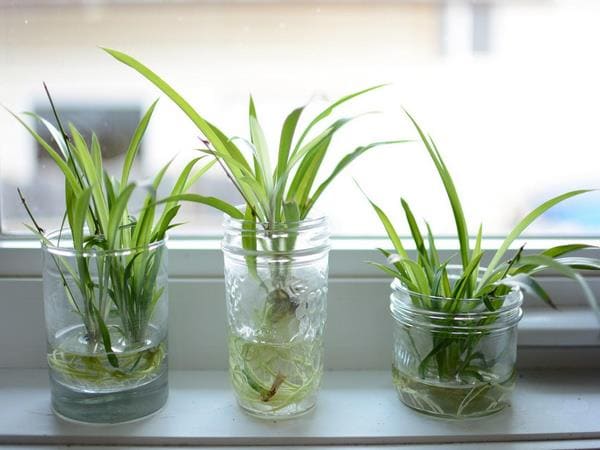 Image source: gardenmanage
Image source: gardenmanage
Spider Plant is one of the most popular houseplants. You can grow in pots in soil or in vases in water. Simply, cut off one of the plantlets, then put it in your vase.
3. Snake Plant
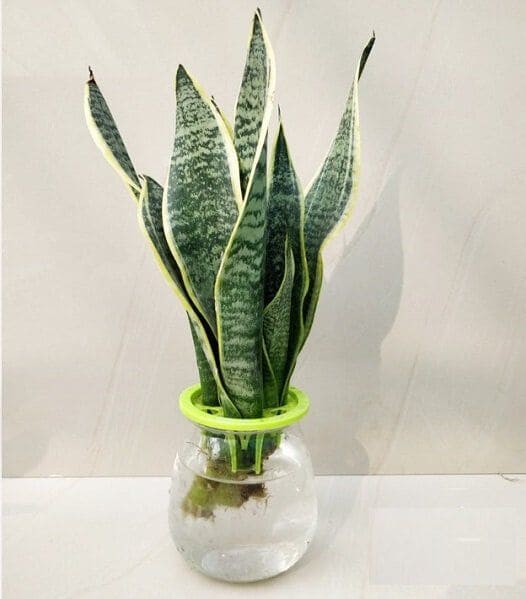 Image source: plantdecors
Image source: plantdecors
Snake Plant looks great in a transparent vase with tall variegated leaves. It is also excellent for purifying harmful toxins from the air.
4. Monstera
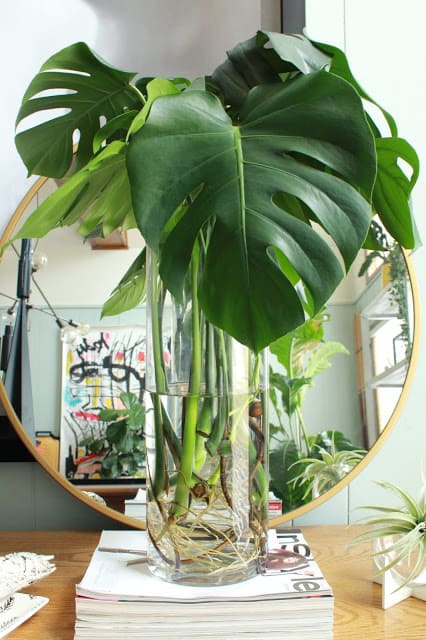 Image source: keephouseplantsalive
Image source: keephouseplantsalive
Monstera offers unique cut leaves looking gorgeous when put in a matching vase. This low-maintenance plant also grows well in the water environment.
5. Purple Heart Plant
 Image source: creativejewishmom
Image source: creativejewishmom
By providing deep purple leaves with delicate and tiny pink flowers, this Purple Heart Plant looks more beautiful in a vase.
6. Watermelon Peperomia
 Image source: kirkdamaso
Image source: kirkdamaso
This Watermelon Peperomia shows off thick and bushy foliage, making it an amazing centerpiece. The best varieties are Columbian and Watermelon Peperomia which you should choose to grow.
7. Geranium
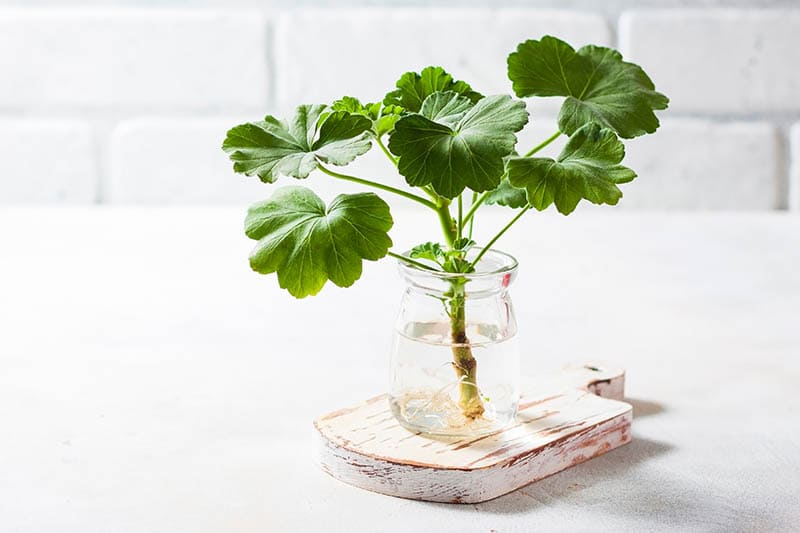 Image source: gardenerspath
Image source: gardenerspath
Geranium is a well-loved houseplant because of its easy-to-take-care properties along with its bright pink flowers. Growing it in a vase with water is a great way to start a plant from cuttings!
8. Alocasia
 Image source: carousell
Image source: carousell
Alocasia bears arrow-shaped leaves that look stunning in glass vases. It is quite easy to propagate and grows happily in indirect light.
9. Chinese Money Plant
 Image source: bonjourtangerine
Image source: bonjourtangerine
Chinese Money Plant is a compact specimen that looks impressive when kept on small tables and windowsills.
10. Wandering Jew
 Image source: lady-bella
Image source: lady-bella
This fast-growing plant brings pretty purple-colored and variegated leaves looking smashing in vases.
11. English Ivy
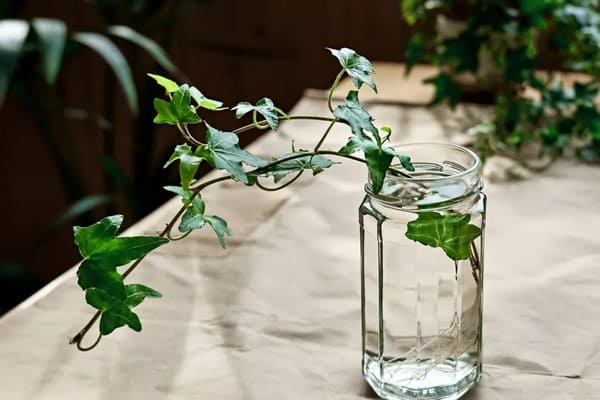 Image source: ruralsprout
Image source: ruralsprout
English Ivy is an evergreen vine with flexible stems dangling down, which makes it look quite charming in a vase.
12. Swiss Cheese Plant
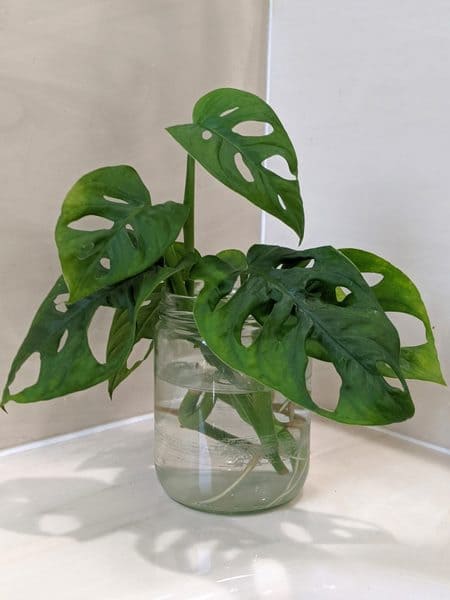 Image source: pottedpixie
Image source: pottedpixie
The leaves of this Plant have natural holes looking like swiss cheese, as the name suggests. This plant also loves climbing so you can place it near a shelf and watch it grow upwards!
13. Peace Lily
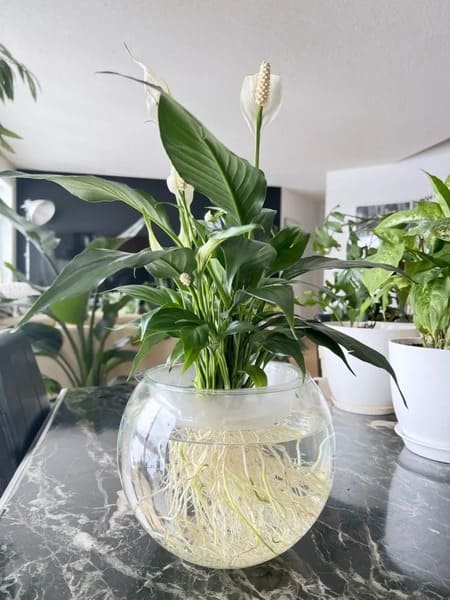 Image source: jaydeemahs
Image source: jaydeemahs
Peace Lily is a popular houseplant that showcases the combination of the white and green leaves looking quite classy. It is also easy to maintain.
14. Anthurium
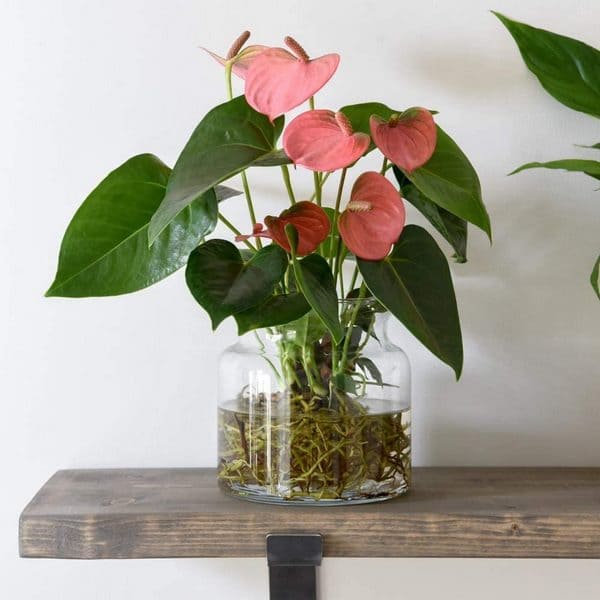 Image source: amazon
Image source: amazon
Anthurium blooms colorful bracts pop against dark green foliage making. It can do well in a transparent vase in the water.
15. Lucky Bamboo
 Image source: modernfarmer
Image source: modernfarmer
Lucky Bamboo is an easy-to-maintain plant that can grow well in any condition. It also is famous for its air-purifying ability you can grow.
GARDEN
15 Different Fern Types to Grow Indoors
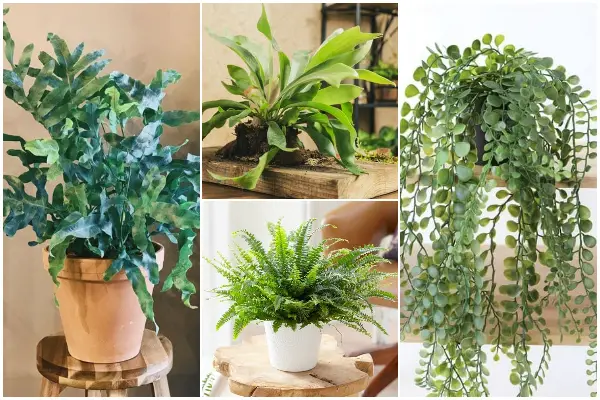
Want to bring tropical beauty to the home, indoor ferns are a lush and rewarding addition to any space. With vibrant, cascading fronds that stand out among other indoor plants, they are the top options for adding plant life and texture to your living space.
Here are the 15 Different Fern Types below that you will love growing. Like other houseplants, they also adapt to indoor conditions with minimal care.
#1 Kangaroo Fern (Microsorum diversifolium)
 Image source: rhsplants
Image source: rhsplants
Kangaroo Fern comes from Western Australia that features odd-shaped, long bright green fronds growing from creeping fuzzy rhizomes. To grow this fern, let’s give it moist soil and place it in a warm location.
#2 Boston Fern (Nephrolepis exaltata)
 Image source: etsy
Image source: etsy
Boston Fern is also called the sword or ladder fern, it has blue-green sword-shaped fronds that stay evergreen with arching gorgeous erect leaflets. This plant grows well in low light and just with minimalistic attention.
#3 Botton Candy Boston Fern (Nephrolepis ‘Cotton Candy’)
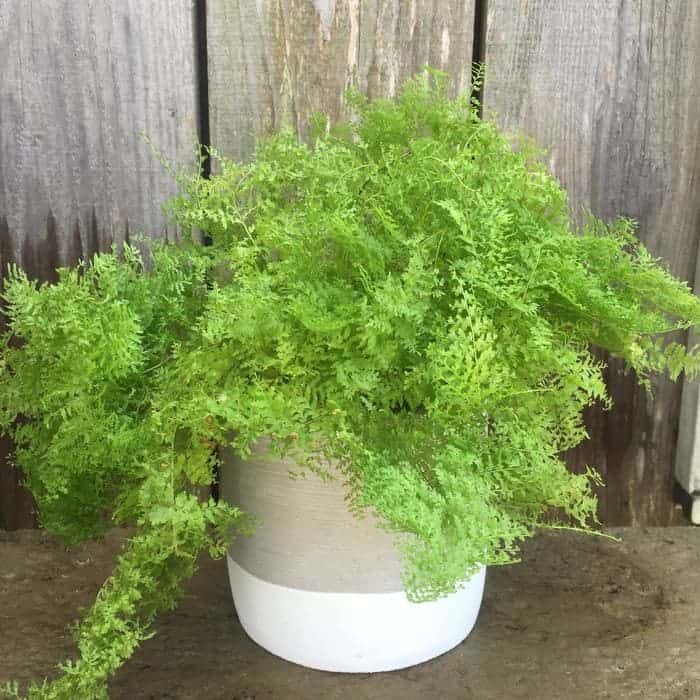 Image source: gatewaygardens
Image source: gatewaygardens
Cotton Candy Boston Fern does well both indoors and outdoors to show off fuzzy, soft, and bright green fronds. It looks great when grown in pots or hanging baskets. For its happy growth, give it in a shady location outdoors and on an Eastern direction window indoors.
#4 Bird’s Nest Fern (Asplenium nidus)
 Image source: springhillnursery
Image source: springhillnursery
Bird’s Nest Fern is an easy-care epiphyte variety as long as it gets enough humidity. In the right condition, it will bring leathery, strap-shaped, shiny, bright apple green fronds patterned in dark brown to black midribs and wavy edges.
#5 Blue Star Fern (Phlebodium aureum)
 Image source: instagram
Image source: instagram
Blue Star Fern is an epiphyte fern that adapts fast to the indoor environment. Its blue-green leaves are sometimes speckled with a silver or gray hue. To plant it indoors, give it well-draining soil, or an equal mix of perlite, pumice, or gravel.
#6 Lemon Button Fern (Nephrolepis cordifolia ‘Lemon Button’)
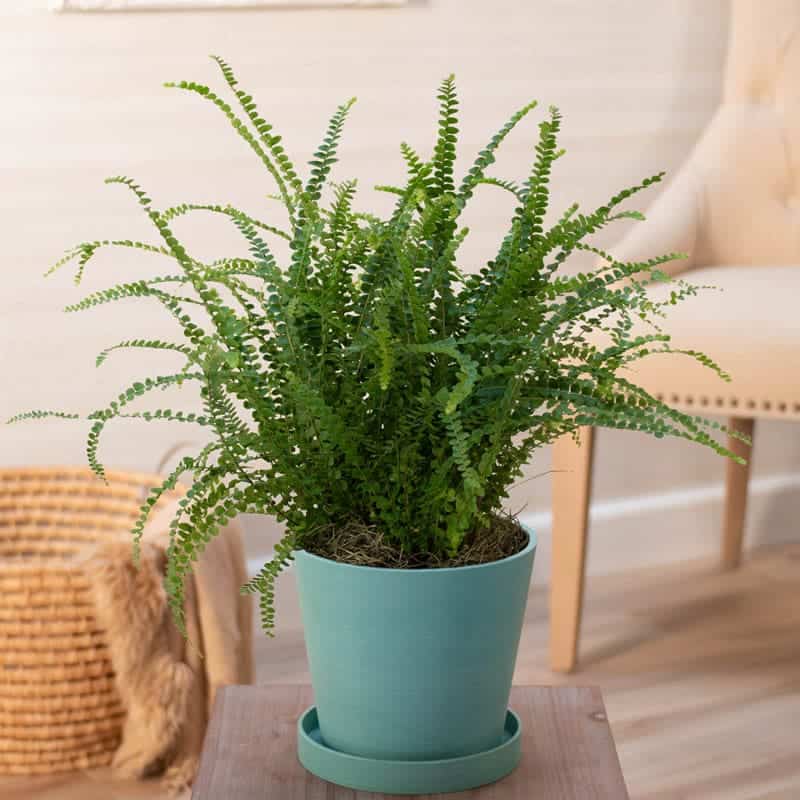 Image source: brecks
Image source: brecks
Lemon Button Fern showcases tiny, golden-green round button-like leaflets. When grown in hanging baskets or in terrariums, its long, arching leaves give a stunning look. For its optimum growth, give it medium to bright light and high humidity.
#7 Squirrel’s Foot Fern (Davallia bullata)
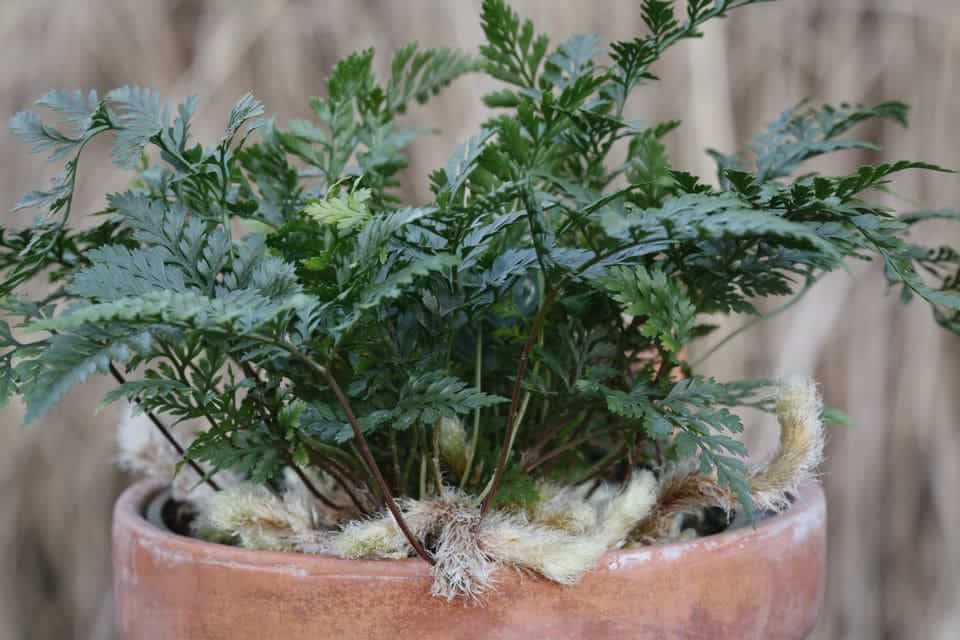 Image source: greencloudsolutions
Image source: greencloudsolutions
In the wild, the plant’s rhizomes of the Squirrel’s Foot Fern wrap around a tree to cling to them, hence the name. Place in indirect light and highly humid conditions, it will grow best to produce lacy and green foliage.
#8 Cretan Brake Fern (Pteris cretica)
 Image source: etsy
Image source: etsy
Native to Europe, Africa, and Asia, this evergreen fern has innate, flat green fronds with attractive variegation and wavy edges. The Cretan Brake Fern favors growing in a humid environment, so you can grow it in hanging baskets and place it in bathrooms or on tabletops.
#9 Maidenhair Fern (Adiantum)
 Image source: englishgardens
Image source: englishgardens
Maidenhair Fern is a popular fern that performs delicate, light, lacy, airy, bright green leaves on slender black stems, making it look great in hanging baskets. This fern variety requires slight moisture and bright indirect sunlight for its happy growth.
#10 Asparagus Fern (Asparagus aethiopicus)
 Image source: jensplantsandflorist
Image source: jensplantsandflorist
Asparagus Fern is one of the best hanging ferns that you can in baskets and macrame holders to enjoy its lacy-green foliage leaves. To grow this fern, give it humid locations and mist regularly, especially in summer.
#11 Japanese Holly Fern (Cyrtomium falcatum)
 Image source: plantify
Image source: plantify
Japanese Holly Fern shows off serrated, sharp-tipped long deep green leathery fronds that look like holly branches. This fern grows well both in partial sun and shade, so it thrives well indoors with minimum maintenance.
Native to New Zealand, the Button Fern is a beautiful, easy-to-grow fern. It displays round and small leaflets or ‘buttons’ on slim stems, hence the name. This fern variety adapts well to average indoor conditions.
#12 Rabbit’s Foot Fern (Humata tyermanii)
 Image source: hearthandvine
Image source: hearthandvine
Rabbit’s Foot Fern loves growing in bright, indirect light. It produces dark green, delicate, fine-textured fronds on fuzzy root-like stems (rhizomes).
#13 Staghorn Fern (Platycerium)
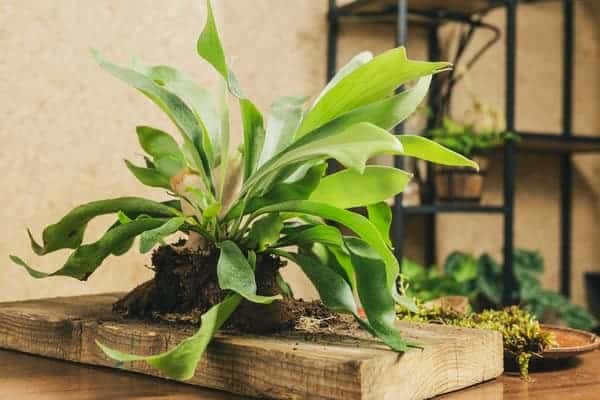 Image source: justhouseplants
Image source: justhouseplants
Staghorn Fern is a stunning epiphytic fern that offers exotic green fronds resembling the horns of an elk or male deer. It is easy to grow from propagating its side shoots or spores. It grows well in bright, indirect light, well-watered in a warm, and well-draining starter mix.
#14 Button Fern (Pellaea rotundifolia)
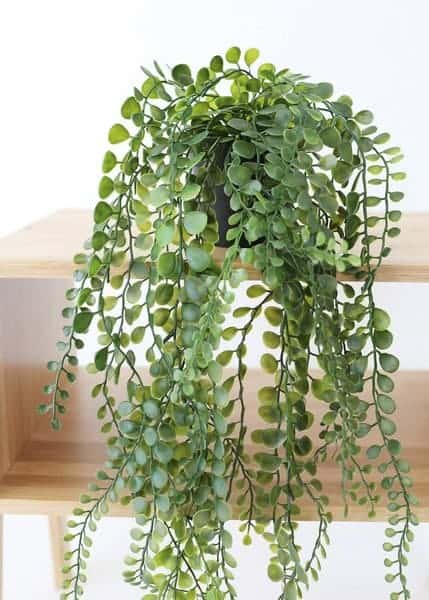 Image source: ifloralart
Image source: ifloralart
Native to New Zealand, the Button Fern is a beautiful and easy-to-grow plant. It produces round and small leaflets or ‘buttons’ on slim stems, hence the name.
#15 Christmas Fern (Polystichum acrostichoides)
 Image source: bigplantnursery
Image source: bigplantnursery
The fern variety offers glossy and green fronds that give the best color around Christmas time, so its name comes from this. Grow it in bright and indirect light for the best color. Also, water the plant once a week and keep the soil consistently moist.
GARDEN
15 Best Houseplants for Your Bathroom

The bathroom is always the most cleaned in the house but it is missed in decoration. Most people also think that the area of the bathroom is small that can’t set any kind of decoration or apply sophisticated architecture. However, adding a green touch by growing some of the best bathroom plants below will give your bathroom a fresh look!
1. Cast Iron Plant
 Image source: plantvine
Image source: plantvine
This incredibly tough houseplant, which appears to thrive on neglect, certainly lives up to its name. The cast iron plant can survive low light, infrequent watering, and extreme heat.
Nevertheless, for best results place this potted plant in low to moderate light – keeping out of direct sunlight, and water it regularly, allowing it to dry out before re-watering.
The cast iron will happily thrive in temperatures from 50 to 85 degrees.
2. Dracaena
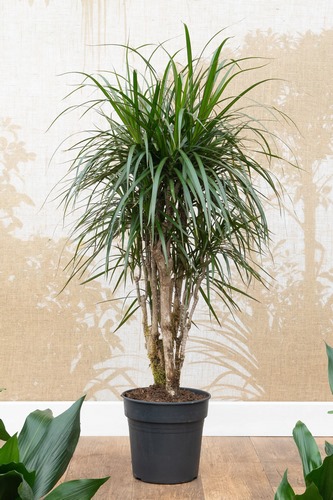 Image source: houseofplants
Image source: houseofplants
Dracaena plants, or dragon plants, are fantastic air purifiers which come in over 40 varieties.
This undemanding plant prefers light shade as its leaves will scorch if too bright; and a level of humidity not generally found in most rooms. Therefore, by placing your dragon plant in the bathroom, the lighting and humidity will prevent brown leaf tip and keep its greenery bright and flawless.
3. Orchid
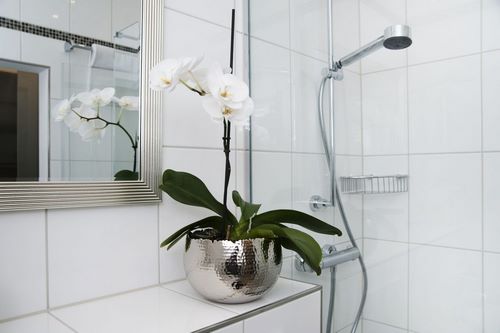 Image source: realsimple
Image source: realsimple
Give your bathroom a luxury spa feel with the addition of a subtle yet elegant orchid plant.
Place your orchid on the bathroom windowsill, where the indirect sunlight will provide adequate light but won’t cause leaf scorch; while the high humidity mirrors the flower’s natural environment.
It’s also a relatively compact flower making it perfect for smaller rooms, where it can be perched on the corner of the bathtub or next to the sink.
4. Pothos
 Image source: bobvila
Image source: bobvila
The golden pothos boasts beautiful marbled, heart-shaped leaves and is yet another low maintenance plant for your bathroom.
Ideal greenhouse conditions for this plant are very bright indirect light, high humidity, and warm temperatures.
However, as the bathroom ticks two out of three of these conditions, your pothos should do just fine indoors, although its leaves many not grow to the gigantic size they would with more light!
In order to stop the pothos getting out of control, and to save on space, hang it from the ceiling or high shelf.
5. Aloe Vera
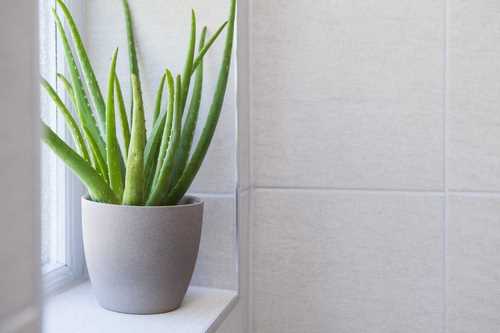 Image source: gardentabs
Image source: gardentabs
The aloe plant just keeps on giving! Not only is it known as the ‘plant of immortality’ because it is so difficult to kill, it is an incredibly useful plant to have around the home.
Aloe vera juice is bursting with vitamins and minerals, while the gel can be used as a topical treatment for minor cuts and burns, insect bites, dry skin and more.
This striking and healing plant should be placed close to the bathroom window and, because of its low water requirements, the humidity alone may meet most of its water needs!
6. Peace Lily
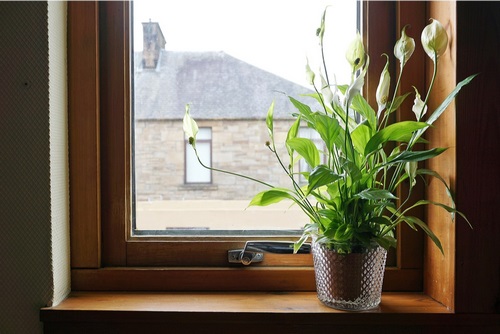 Image source: bustlingnest
Image source: bustlingnest
The peace lily is a striking flower, with glossy leaves and white blooms. It thrives in low light conditions, although it should be exposed to some indirect sunlight.
To simulate the natural humidity of the tropics, a daily misting or position next to a steamy shower is a must for the peace lily.
It’s another of NASA’s best plants for air purity, as it helps to filter out harmful benzene, trichloroethylene, and formaldehyde toxins.
7. Chinese Evergreen
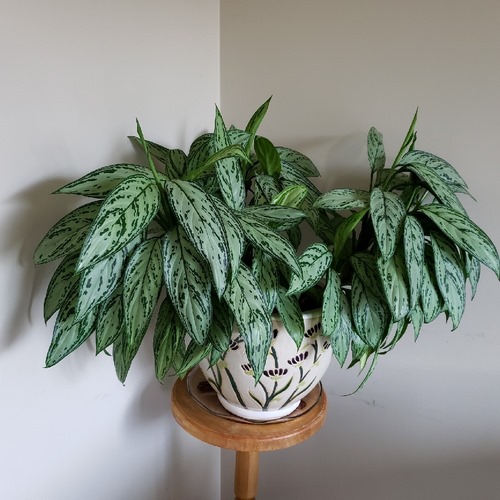 Image source: gardentags
Image source: gardentags
Boasting green leaves streaked with white or yellow, the tropical Chinese evergreen is one of the most durable plants you can grow, and has even been described as ‘almost foolproof’!
These plants thrive in medium to low light, or indirect sunlight. Although the Chinese evergreen prefers the warm temperatures and humid conditions of the bathroom, it’s flexible enough to tolerate other environments if necessary.
8. Philodendron
 Image source: sunrisespecialty
Image source: sunrisespecialty
This tropical indoor plant requires little in the way of care.
Philodendrons prefer the medium light intensity they would have on the jungle floor. If the light is too intense, its leaves will turn yellow; but if the leaves are widely spaced, it may need more light so you should consider installing fluorescent bulbs.
Although this hardy plant can tolerate average humidity, high levels promote lush, shiny foliage. Ideal growing temperatures are between 75 and 85 degrees F.
9. Bamboo
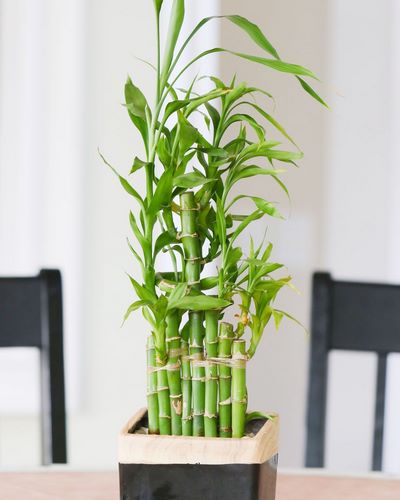 Image source: housebeautiful
Image source: housebeautiful
Lucky bamboo needs very little light to grow, and should be placed in low, indirect light.
It doesn’t even need any soil – simply pop the stalk into a container filled with pebbles and water. Change the water every two to four weeks.
Be warned that this is a fast growing plant, but you can curtail its growth by providing a physical barrier (such as a recessed shelf) or by shaping it regularly.
10. Snake Plant
 Image source: instagram
Image source: instagram
Also known as Mother-in-Law’s Tongue, the leaves of the snake plant grow upright, and feature yellow or white edging.
One of the hardiest houseplants, the snake plant can survive low light levels and is flexible in terms of heat and water.
The snake plant also filters some nasty household toxins from the bathroom air – including formaldehyde which can be found in cleaning products, tile grout, adhesives, and even some cosmetics!
11. ZZ Plant
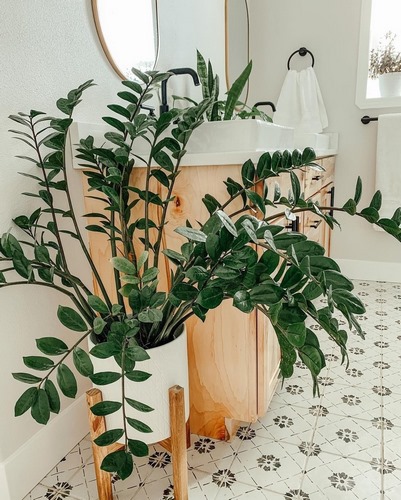 Image source: stylecurator
Image source: stylecurator
Dubbed the ‘eternity plant’ because it can tolerate quite a bit of neglect, the ZZ boasts beautiful oval-shaped, glossy leaves that will bring a fresh and vibrant feeling to any bathroom.
Although deep shade or direct sunlight don’t work for this plant, it can grow in most other light conditions such as a north, east or west facing window; and in a wide humidity range.
12. Spider Plant
 Image source: homedit
Image source: homedit
Commonly found in public spaces, the spider plant helps remove odors, fumes and around 90% of formaldehyde from the air.
This plant can grow in a wide range of conditions and requires little in the way of care. Because of this, they work well in bathrooms where they get either full sun or shade, although if plantlets fail to develop the plant is probably not getting enough light.
Allow the top layer of the soil to dry out between waterings.
13. Begonia
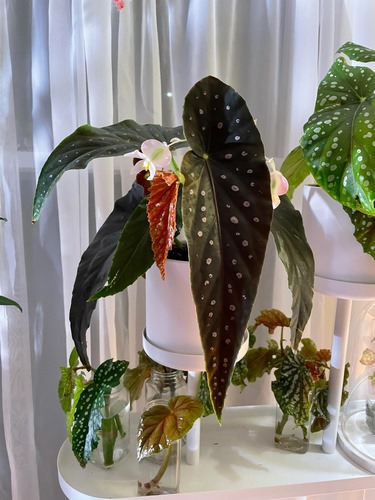 Image source: reddit
Image source: reddit
These pretty blooms do well indoors.
In fact, in many climates, they must be overwintered inside – with the bathroom being one of the best locations to do just this.
Begonias do best in fluorescent lighting, although they can survive when placed in window locations too (the exception being north-facing windows). They also require daily bathroom humidity or regular misting.
14. Ivy
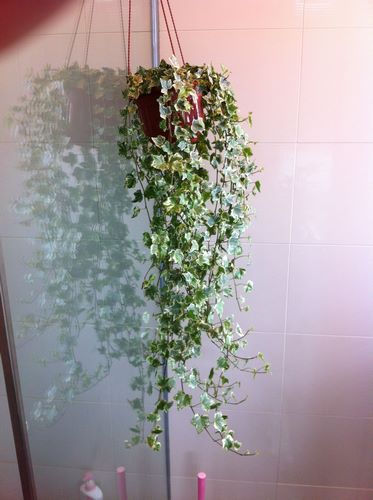 Image source: pinterest
Image source: pinterest
Ivy, particularly English Ivy, is one of NASA’s top air purifying plants. It can even help you keep the bathroom clean and hygienic by removing feces and mold from the surrounding air!
In bathrooms where space is at a premium, the ivy plant can be placed on a ledge or in a hanging basket where the leaves can elegantly trail down.
Needing just moderate exposure to sunlight, this evergreen vine enjoys the high humidity levels commonly found in bathrooms.
15. Boston Fern
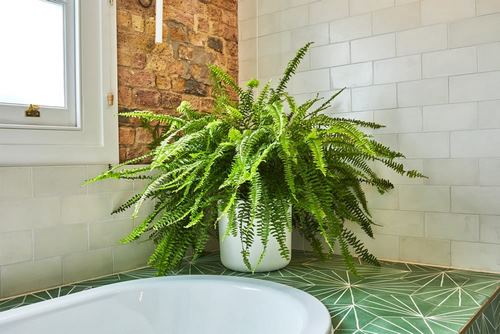 Image source: patchplants
Image source: patchplants
A popular variety of fern with frilly leaves and long, hanging fronds, the Boston fern is native to sub-tropical and tropical rain forests.
It grows best when placed on a windowsill or in a position which receives lots of indirect light. Humidity and temperatures of between 55 and 75 degrees are also important for your fern to thrive. In the growing months, the soil should be kept moist, but not saturated.
Other ferns also do well in bathrooms, including the Asparagus, Staghorn, and Bird’s Nest varieties.
-

 GARDEN9 tháng ago
GARDEN9 tháng ago4 Easiest Ways to Get Free Plants
-

 ANIMALS9 tháng ago
ANIMALS9 tháng agoBritish Angler Caught Huge 67-Pound Goldfish in the World
-

 FUNNY9 tháng ago
FUNNY9 tháng ago30 Weirdest Things That People Came Across On The Subway
-

 FUNNY9 tháng ago
FUNNY9 tháng ago30 Funny and Perplexing Photos That Make You Laugh All Day
-

 GARDEN8 tháng ago
GARDEN8 tháng ago30 Shimmering Side Yard Landscape Ideas
-

 FUNNY9 tháng ago
FUNNY9 tháng ago22 Design Fails That Will Make You Laugh Out Loud
-

 ANIMALS9 tháng ago
ANIMALS9 tháng agoKindhearted Driver Rescues Skinny Dog Hiding Near Highway Thanks to His Eagle Eye
-

 DIY & CRAFT9 tháng ago
DIY & CRAFT9 tháng ago17 Inexpensive DIY Garden Walkway Ideas




